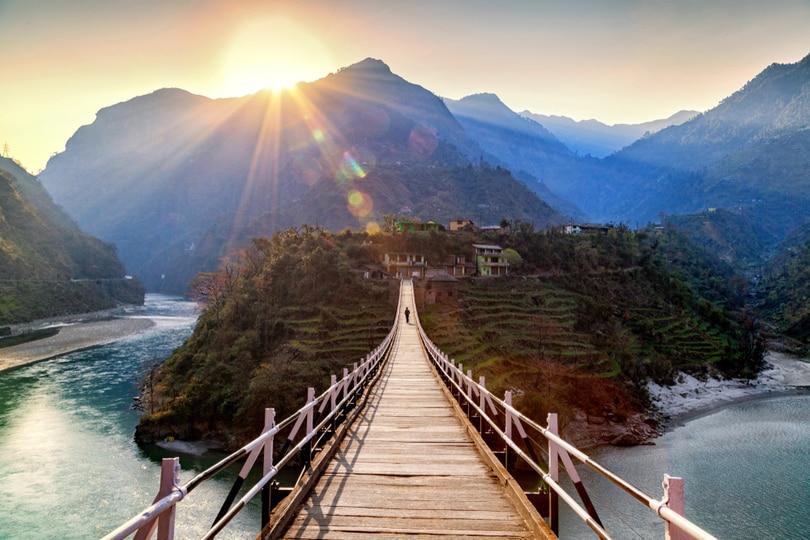Overview of the Beas Kund Trek
An easy weekend trek, the Beas Kund trek is the right choice if you want a short break from the routine life. One of the most popular treks of the Kullu Valley, it is also one of the most beautiful. From snow-clad mountains to pristine water streams and, deodar and pine forests to green meadows—the trek is full of picturesque views.
Apart from a plethora of natural beauty, the Beas Kund Trek also holds sacred significance. It is believed that sage Vyas, who has written the Hindu epic, Mahabharata, took his daily bath here. It is from him; the Beas River derives its name.
The best part about this trek is that it is suitable for people of all age groups and requires no prior trekking experience. So if you’re planning to embark on this delightful trek, here’s a comprehensive guide you should consider referring.
Highlights of the Trek
- Hiking along the Solang Nullah.
- Spectacular views of the Pir-Panjal Range of the Himalayas.
- A close look inside the lifestyle of the nomadic Gaddi tribe.
- Magnificent views of peaks like Hanuman Tibba, Deo Tibba, Indrasan and Shetidhar as well as a glimpse of Ladakh.
- Beautiful sights of meadows and trees—deodar, pine, walnut etc.
- Solang Valley—famous for its unparalleled beauty and range of adventure sports.
Best Time for the Beas-Kund Trek – June to October
Maximum Elevation – Beas Kund (3690m)
Duration of the Trek – Three days (you can also reach Beas Kund in just a day if you start trekking early in the morning from Dhundhi).
Difficulty Level – Easy (recommended for beginners)
Prominent Peaks – Hanuman Tibba (5892m), Deo Tibba (6001m) and Indrasan (6221m)
Prominent Villages – Dhundhi, Shanag and Burwa
Starting Point of the Trek – Solang Nullah
Campsites – Bakarthach and Beas Kund Lake
Things to do on the Trek Route
- You can take some time out in Solang at the beginning or after the trek to enjoy an unforgettable experience of adventure activities like parachuting, paragliding, skating and zorbing.
- You can also attempt trekking to nearby Patalsu Peak (3,963m).
- It is said that during winters, an ice Shivling is formed in Solang Valley, which is said to be taller than the Shivling formed at Amarnath.
- You can undertake additional treks to climb the peaks surrounding the Beas Kund such as Hanuman Tibba.
Preparation
You must carry the following equipment with you –
- Baggage
- Waterproof rucksack – 1 (30 l or more)
- Clothing and accessories
- Cotton shirts/t-shirts – 3
- Cotton pants/trousers – 2
- Thermals (upper and lower) – 1 pair
- Sweater (full Sleeves) – 1
- Windcheater/warm thick jacket – 1
- Trekking boots – 1 pair
- Cotton socks – 4 pairs
- Slippers (optional) – 1 pair
- Woollen cap – 1
- Dark sunglasses – 1 pair
- Toiletry and personal care
- Towel – 1
- Toilet kit – soap, shampoo sachets and face wash
- Toilet paper roll
- Sunscreen – SPF 40 or above
- Lip balm/vaseline
- Hand sanitizer
- Electronics
- Torch with extra batteries
- Camera with spare batteries
- First aid
- Paracetamol
- Ibuprofen (analgesic)
- Digene
- Norflox
- Pain relief spray
- Band-aids
- Crepe bandage
- Soframycin
- Cotton buds
- Water bottle (1 ltr) – 1
- Plastic lunch box – 1
- Food items
- Chocolates
- Glucose powder
- Dry fruits
- Other
- Mug – 1
- Plate – 1
- Spoon -1
- Big Polybag (waterproofing purpose)
How To Reach

The trek starts from Solang Nullah. It is accessible from Manali (which means it is easily accessible from Delhi). You can break the entire journey into two parts:
Delhi – Manali (550km)
By Road – Manali is well connected by road with Delhi, Ambala, Chandigarh, Dehradun, Haridwar, Shimla, Dharamshala and Chamba/Dalhousie. You can take buses run by the private bus operators, Himachal State Road Transport or Himachal Tourism from Delhi or Chandigarh.
By Rail – You can take broad gauge train to travel up to Pathankot from where a narrow gauge train can be taken to Jogindernagar, which is the nearest railway station from Manali. The rest of the way till Manali can be covered by road.
By Air – The nearest airport from Manali is Bhuntar, which is 50km away from Manali. Air India operates flights between Delhi and Bhuntar. From Bhuntar, you can take a taxi to reach Manali.
Manali – Solang Nallah (14km)
To reach the base camp of Solang Nallah from Manali, you can hire a jeep or taxi. You also have the option of taking a bus that leaves for Solang from the bus stand near the Main Square, every day. It takes about an hour to reach Solang. The road from Manali to Solang is covered with lush apple orchards. You can spot various dhabas and small shops on the way from where you can stock food for the trek and rent any trekking equipment.
Accommodation
Manali
You can leave for Solang on the same day from Manali; but, if you want to stay in Manali for some time, you can choose from a variety of stay options like hotels, hostels and guesthouses. You can choose to stay in the Himachal Pradesh Tourism Development Corporation (HPTDC) Log Huts for a luxurious and unforgettable experience. There are many government lodges, rest houses, circuit houses and forest rest houses maintained by Himachal Pradesh Public Works Department (HPPWD).
Solang
There are many hotels available; although to feel the nature at its best, you can put up a tent as well.
On the Trek Route
What can beat the feeling of spending the night under a starry sky? You can put up your tent at the various campsites on the trek route.
Itinerary
Day 1: Manali – Solang – Dhundi – Bakarthach
Highlight of the Day – Trek in the meadows, and enjoy the view of Deo Tibba and Indrasan peaks.
On the first day, travel to Solang Valley from Manali. It takes around an hour to reach the base camp at Solang Nullah. On your way, you will cross the old villages of Shanag and Burwa. The roads till Solang are paved with apple orchids.
From Solang, move ahead to the north-west side along the bank of Beas to the valley’s last hamlet—Dhundhi. It is an eight km walk that takes you through the heart of the forests of walnuts, oaks and fir while giving glimpses of the lofty Deo Tibba (6,001m) and Indrasan Peak (6,220 m). Dhundhi gives you the last opportunity to stock up few essentials before you head up to the mountains.
Next is a gentle climb of two hours, which involves crossing the river, making your way through boulders and passing across the silent meadows of Bhojpatra; this takes you to Bakarthach—the ‘Shepherd’s Field’. It got its name because it is the common grazing ground for the animals of the local nomadic tribe of Gaddis. The smell of the grass, the smiling wildflowers, beautiful meadows and the enchanting view of the surroundings—everything will take you to a different world. You can use this beautiful, high-altitude alpine meadow as your first campsite.
Day 2: Bakarthach – Beas Kund – Bakarthach
Highlight of the Day – The serene blue lake of Beas Kund
From Bakarthach, start your trek up to the Beas Kund early in the morning. The relatively flat walk amidst the meadows slowly transforms into a tough walk through the silt and boulders as you move along the river bank. Finally, a steep climb will lead you to the mesh of little streams filled with the glacier’s melting water. After walking for a while, the path will end near the alluring glaciated lake hidden in the lap of the Himalayas—Beas Kund.
As you walk around the lake, you get a view of the mountains forming a veil that keeps this natural beauty untouched by human intrusion. Shetidhar, Ladakhi, Friendship, Hanuman Tibba, Makerbeh and Shikhar Beh are the famous peaks near the Beas Kund. As you touch the pristine, blue water of the lake, you can feel all your senses conspiring to relieve you from the exhaustion caused due to trekking.
After walking around and resting for a few hours, you can return to the campsite at Bakarthach to witness the starry night.
Day 3: Bakarthach – Solang – Nehru Kund – Vashisht – Manali
Highlight of the Day – Trekking back to Solang Valley, and witnessing the lifestyle of the locals.
You can descend back to Dhundhi and then to Solang following the same trail over the boulder field. From Solang, you can hire a taxi to Manali. While on the drive, you get a glimpse of the unpretentious lifestyle of the locals. You will cross the small, traditional villages of Bahang, Gusal, Shange and Burwa, and also, the Nehru Kund. Nehru Kund is a natural spring of cold water believed to have originated from the Bhrigu Lake. It is named after the former Prime Minister of India, Pt. Jawaharlal Nehru as he used to drink water from this spring during his stay in Manali.
You can go to the small village of Vashisht which is three km away from Manali. Famous for its natural hot sulphur springs endowed with great healing power, this place is a must-visit. You can also visit the old shrines in pyramidal temples dedicated to Lord Ram and sage Vashisht, after whom this village has been named. To avoid the crowd at the tanks of hot sulphur spring, you should go early in the morning (before 9 am). From here you can drive further to Manali, where this beautiful journey comes to an end.
The entire trek, being easy and short is ideal for those looking for a quiet sojourn in the serenity of the Himalayas. Hiking up the green valley, capturing the views of snowy peaks, it is perfect for seeking some mental rejuvenation away from the shrill of urban routine.
So what are you waiting for? Gather all your essentials and leave for this amazing trek right away.
- Top 16 Things to do in Kolkata in 24-hours - July 25, 2019
- Savour These Delicacies While in Bali for a True Gastronomical Treat! - May 29, 2019
- A Seasonal Guide to Sri Lanka – The Pearl of the Indian Ocean 2019 & 2020 - May 24, 2019
- Six Experiences You Mustn’t Miss in Sri Lanka for A Fabulous Trip! - May 24, 2019
- 5 Bazaar Ramadan terbaik di Kuala Lumpur. - May 15, 2019
- Planning to Visit Ladakh? Here is a Seasonal Guide to Help You Plan Your Trip - May 8, 2019
- Visit These Places in Bali For an Exciting Vacation in The Tropical Island! - May 7, 2019
- 8 Best Places to Spend Your Vacation in the Hills of Himachal Pradesh - April 17, 2019
- Places to Visit in Thailand - April 16, 2019
- Want to Visit Bali at Minimum Cost? Follow Our Guide to Travel Bali on a Budget! - April 12, 2019

